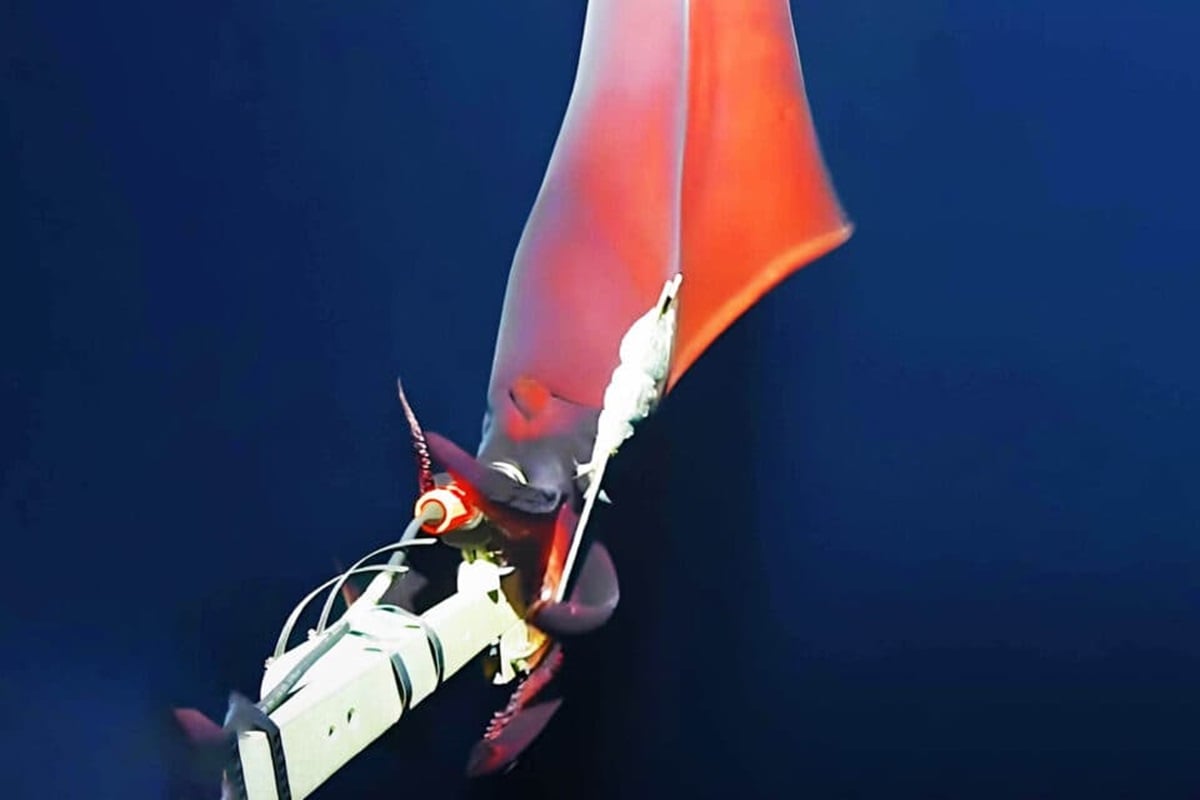In a groundbreaking deep-sea expedition, scientists have captured rare footage of the elusive Taningia danae, a deep-sea hooked squid, in its natural habitat. This significant discovery was made north of the Samoan Passage, over a kilometer beneath the ocean’s surface.

Taningia Danae: A Deep-Sea Enigma
- The Taningia danae, part of the Octopoteuthidae family, is one of the largest deep-sea squids known to science.
- Despite reaching lengths of up to 1.7 meters, much of its behavior and ecology remains a mystery due to the difficulty of studying these creatures in the depths they inhabit.
Bioluminescent Giant of the Ocean
- This species stands out for its two large photophores, which are the biggest bioluminescent organs found in nature.
- These light-producing organs are thought to play roles in communication, hunting, and defense against predators.
Global Presence, Localized Study
- Found in deep waters worldwide, Taningia danae’s exact distribution and population numbers are largely unknown due to the challenges of deep-sea observation.
Predatory Tactics in the Abyss
- As a predator, the squid uses its bioluminescence and formidable arms to hunt fish, crustaceans, and other cephalopods.
Capturing the Deep-Sea Hooked Squid on Camera
- The research team, led by Associate Professor Heather Stewart and including members from the Minderoo-UWA Deep Sea Research Centre, documented this rare encounter using free-fall baited cameras.
The Difficulty of Deep-Sea Observation
- Professor Alan Jamieson highlighted the rarity of such observations and the importance of each encounter for advancing our understanding of these deep-sea dwellers.
Conservation Through Exploration
- The ongoing expedition aboard the RV Dagon aims to document the biodiversity of the deep ocean, emphasizing the need for continued research and conservation efforts.
This encounter with the Taningia danae squid offers a glimpse into the rich and largely unexplored world of deep-sea life, underscoring the importance of marine research in understanding and preserving our planet’s biodiversity.
Leave a Reply